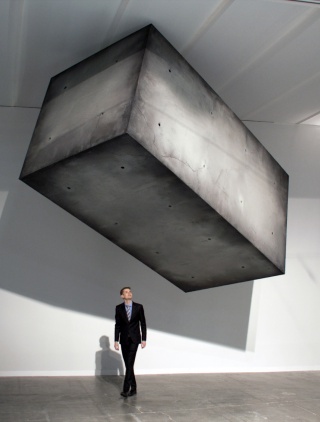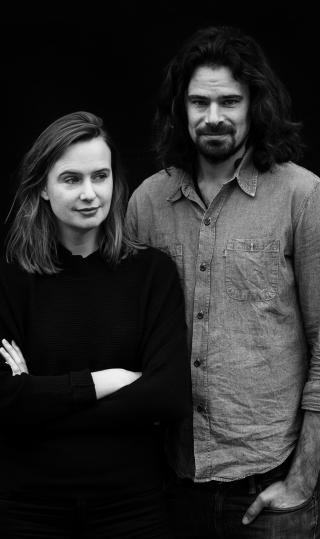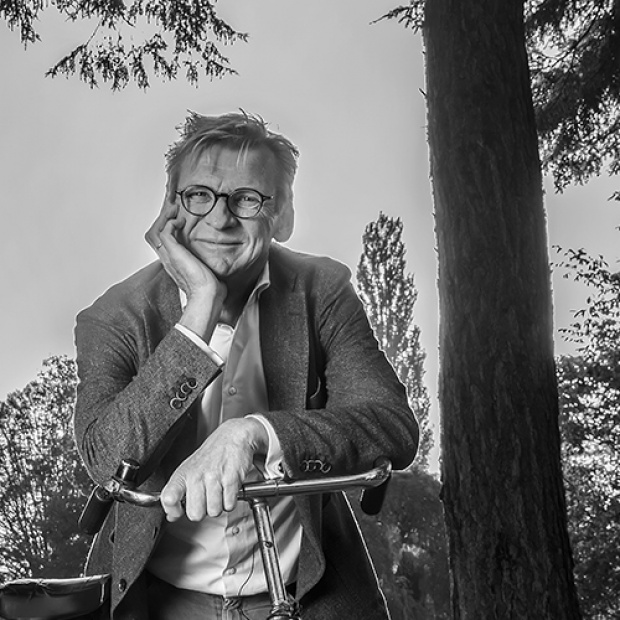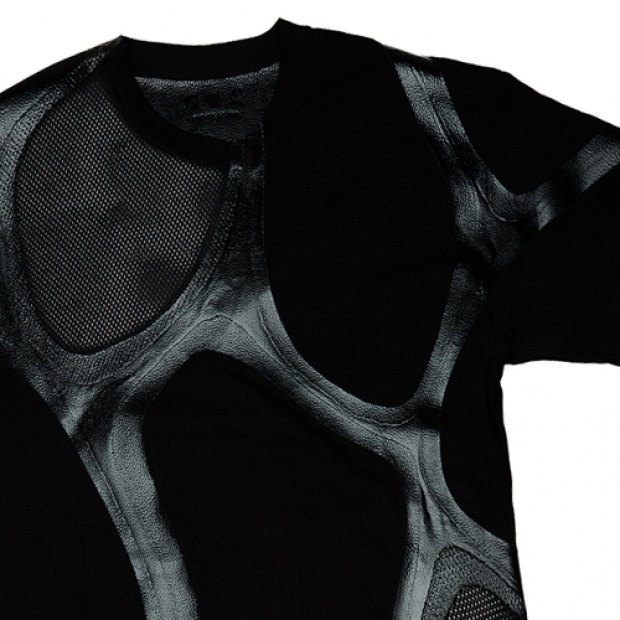Stedelijk Museum
Amsterdam, 2018
cutting
edge of
contradiction

Drifter
Stedelijk Museum
Amsterdam, 2018
Photography Ossip van Duivebode, Gert-Jan van Rooij and Tom Barratt
Consulted sources Studio Drift, #59 Magazine, Artnet, AVROTROS, CoBo Social, Dezeen, Vice, Volkskrant
How it all started
Gordijn and Nauta got to know each other during their first year at Design Academy Eindhoven. They became friends and at one point they had a relationship. They did not plan to start working together; it happened spontaneously. After graduating, Gordijn and Nauta would occasionally help each other with projects, mainly because of how they have a very similar way of thinking. After some intense collaboration, they noticed how they differed from one another and how each one’s differences complemented the other person. That is when they decided to join forces as Studio Drift.
Serving ideas back and forth
Naturally, friendship is a solid foundation, but how does collaboration work in practice? The verdict is that it is both hectic and dynamic. Gordijn and Nauta engage in many discussions, as what one thinks of or says would never occur to the other. This interaction has a very stimulating effect. They then serve ideas back and forth until they agree. While this process can take up to a year, they know that the final result will be a good one. Gordijn focuses mainly on subtle electronics and natural aspects, whereas Nauta draws inspiration from science fiction and focuses on mechanical engineering. Another good aspect is that each person peaks at different times, because Gordijn believes that the flying sculpture Franchise Freedom (2017) would not exist without Nauta’s perseverance. Personally, Gordijn would have given up and started on another project well before completing the flying sculpture.
Doing what you want to do
Because of their backgrounds in design, Gordijn and Nauta are trained to move with technology and to work together with other disciplines. This means that their work transcends the traditional definitions of both art and design. Even during their studies, they did not design products because they were already interested in concepts and installations at that point. They make what interests them; it’s not about the object itself or possessing the object, but about the feeling it creates. Studio Drift uses movement and light for this purpose.
Technology as a driver
Gordijn and Nauta view the role of technology in our society with wonder as opposed to fear. They fuse nature and technology. They use innovative technologies to transform data and algorithms derived from natural phenomena, such as the flight patterns of birds, into an experience that a large group of people intuitively understands. Studio Drift wants to contribute more to the development of human-centred technology. To push the future in the right direction, they are convinced that we need to develop technology primarily based on instinct and intuition and not on physical possibilities.

Lonneke Gordijn and Ralph Nauta
Studio Drift
Impossible does not exist
The working method and message have not changed over the years, but they have developed further. Now, above all, Studio Drift has more knowledge, money, and time than when it started. Previously, they worked in a step-by-step manner, whereas now the two have the help of a twenty-person team. Furthermore, collaborations with scientists, engineers, and software developers make it easier to explore and expand on new ideas. Even if it takes ten years to implement an idea, it doesn’t matter. Making the impossible possible only represents a challenge to Studio Drift. This is how innovations that take us further are brought about.
Amsterdam, 2018
Floating block of concrete
Nauta and Gordijn dream of the improbable with their piece titled Drifter (2017). Making the piece kept them awake for nights on end. After all, how do you make a huge block of concrete appear as if it’s levitating? The duo will not reveal the secret to the magic: through this piece, they want to demonstrate that technology enables us to create a more natural living environment. That’s why they do their best to maintain the illusion.
Concrete as the underlying theme
Drifter was inspired by Utopia, a book written by Thomas More in 1516. He described buildings made of concrete much earlier than when it was commonplace. This material plays an important part in the pieces titled Concrete Storm and Drifters. To Gordijn and Nauta, a block of concrete represents architecture and an environment shaped by humankind. Built-up areas often raise questions such as: Why are things the way they are? Who imagined it or decided it? By continuing to build on that which already exists, we sometimes forget that we have a choice in shaping the world around us. Studio Drift wants to break this cycle of consecutively building one thing onto another, and let people think and dream outside existing structures.

Maths and human traits
The development of Shylight (2012) also involved more than just a beautiful design. The installation consists of objects that produce light, each of which independently descends, opens like a graceful flower, closes, and ascends. To be able to open, each object must be able to ‘catch’ enough wind. If the objects descend too quickly, they will end up swaying. Gordijn and Nauta created more than fifty paper test models to find the optimal mathematical pattern. Moreover, they themselves developed the mechanical construction that moves the lamps up and down as well as the software that coordinates the choreography of the lamps. This choreography simulates autonomy and in turn simulates human behaviour. We expect more intriguing pieces from Studio Drift in the future. As an example, Gordijn and Nauta are interested in moving environments, something they want to express on a larger architectural scale. This is definitely a project to keep an eye on.
Stedelijk Museum
Amsterdam, 2018



